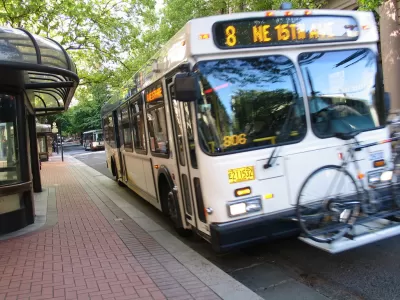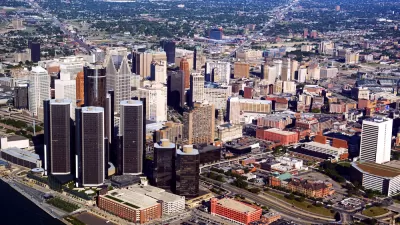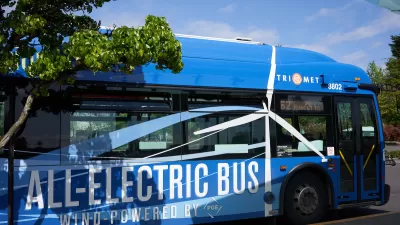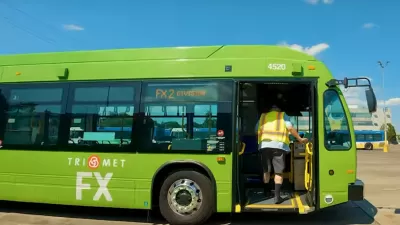Blogger and transit consultant Jarrett Walker paints a picture of Portland's Line 75, a workaday bus serving urban neighborhoods outside downtown. His reflections on radial and orbital journeys are worth a read.

Jarrett Walker gives us a thoughtful look at the way buses work in Portland, Oregon. He writes, "Fortunate people often assume that transit is only for going downtown, because that's the only place where driving is difficult enough that it's an option for them. But for most people, transit is for going everywhere across the city, especially to the more economically diverse jobs and opportunities that tend to be everywhere but downtown."
Portland's Line 75 follows an orbital route, intersecting downtown commuter routes but never going through the center itself. "And instead of hauling big volumes of commuters into and out of downtown, [orbital lines] serve thousands of little trips that are all a bit different, among diverse neighborhoods and destinations. It works: these orbital lines are among the busiest in the city."
Walker says most of our thinking about cities focuses on the radial, not the orbital. "Grand narratives about urban history are also about in-vs.-out. Distance from the center has always been a statement about power, even if its significance has flipped every 50 years."
"The marks of this pulsing oscillation are brutally obvious if you go inward or outward, but if you follow an orbital path, as the 75 does, you encounter more subtlety. History and power flow across the 75 more than along it, but as they do they surge and eddy in fractal patterns, even as a few rocks standing firm against their current."
FULL STORY: Riding against the Grain: Line 75

Alabama: Trump Terminates Settlements for Black Communities Harmed By Raw Sewage
Trump deemed the landmark civil rights agreement “illegal DEI and environmental justice policy.”

Planetizen Federal Action Tracker
A weekly monitor of how Trump’s orders and actions are impacting planners and planning in America.

The 120 Year Old Tiny Home Villages That Sheltered San Francisco’s Earthquake Refugees
More than a century ago, San Francisco mobilized to house thousands of residents displaced by the 1906 earthquake. Could their strategy offer a model for the present?

Opinion: California’s SB 79 Would Improve Housing Affordability and Transit Access
A proposed bill would legalize transit-oriented development statewide.

Record Temperatures Prompt Push for Environmental Justice Bills
Nevada legislators are proposing laws that would mandate heat mitigation measures to protect residents from the impacts of extreme heat.

Downtown Pittsburgh Set to Gain 1,300 New Housing Units
Pittsburgh’s office buildings, many of which date back to the early 20th century, are prime candidates for conversion to housing.
Urban Design for Planners 1: Software Tools
This six-course series explores essential urban design concepts using open source software and equips planners with the tools they need to participate fully in the urban design process.
Planning for Universal Design
Learn the tools for implementing Universal Design in planning regulations.
Clanton & Associates, Inc.
Jessamine County Fiscal Court
Institute for Housing and Urban Development Studies (IHS)
City of Grandview
Harvard GSD Executive Education
Toledo-Lucas County Plan Commissions
Salt Lake City
NYU Wagner Graduate School of Public Service





























